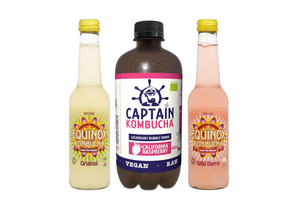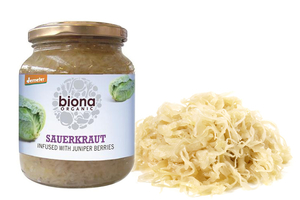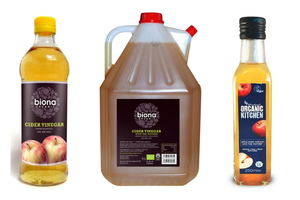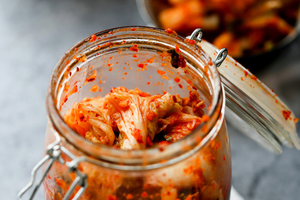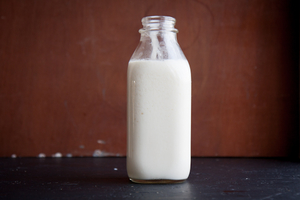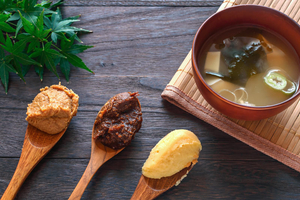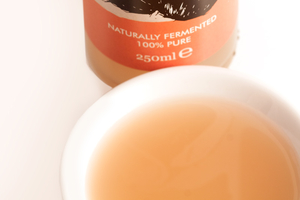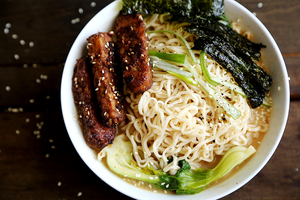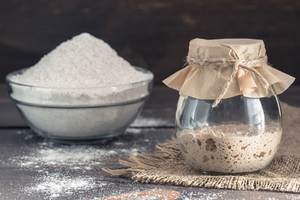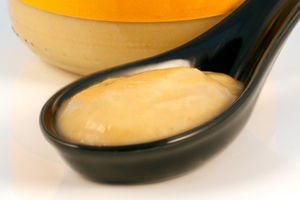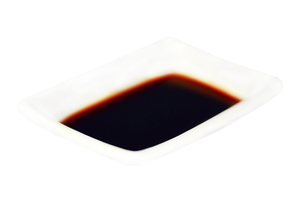AN INTRODUCTION TO FERMENTED FOODS
Fermented foods have been around for centuries: from miso to kefir, kimchi to sauerkraut – there are examples of fermented foods in many different cultures. Fermentation was originally a method of preserving food and drink.
Nowadays the fermentation process is known to result in these foods being a fantastic source of ‘good’ bacteria or probiotics. Probiotics are thought to contribute to a healthy digestive system and overall gut health.
Below you’ll find some of our more popular fermented foods, and how to use them.

Kombucha has been consumed for thousands of years and is thought to have originated in Asia. Traditionally Kombucha is made from green tea or black tea, so not only does this power drink carry all tea’s health benefits (such as high levels of antioxidants), it’s also a rich source of probiotics. Add a bottle of kombucha to your daily routine to enjoy the plethora of health benefits!
Sauerkraut is really popular in Eastern Europe where it is often served at meals as a side dish or relish. It is packed full of good stuff, including dietary fibre, vitamins C and K, potassium, calcium and phosphorus. Sauerkraut is made by lactic fermentation, an age-old technique rich in health benefits. Enjoy with most main meals, including soup.
This popular health food is made by fermenting the sugar from apples. Apple cider vinegar can be used in many different ways. The acetic acid in ACV can kill harmful bacteria, making it a great natural disinfectant. It can also help preserve food. Organic ACV that comes with the ‘mother’ contains strands of protein, enzymes and friendly bacteria, all of which contribute to a healthy digestive system!
Kimchi (via chinasichuanfood.com)
Kimchi is another form of fermented cabbage which is really popular in Asia. Similar to probiotic yoghurt, kimchi contains lactobacilli, which helps digestion. If you haven’t time to make it yourself, try some ready-made Biona Organic Kimchi…
Kefir is one of the best-known probiotic food sources. Unlike normal yoghurt, it contains about 30 strains of bacteria and yeasts, making it a powerful probiotic. We now sell Kefir Starter Cultures so you can get to work making your own kefir!
Miso has been enjoyed in Asia for centuries. It contains all amino acids, so is classed as a complete protein. It is also rich in good bacteria, meaning that it is great for digestion. Miso in Japanese means ‘fermented beans’. We sell a wide range of misos, which you can use in a variety of sweet and savoury dishes.
Coconut vinegar is gaining in popularity in the food world. Like apple cider vinegar, the nutritional properties in coconut vinegars are thought to help with digestive health. In comparison with apple cider vinegar, there are even more vitamins, minerals and amino acids. A win-win situation all round!
Tempeh is sometimes listed as one of the world’s most healthiest foods. Unlike tofu, the soya beans in tempeh are whole and fermented. This means it contains good bacteria and is rich in protein, amino acids and antioxidants.
Sourdough is easier to digest than most breads. This is due to the way the bread is made and the vital component – the sourdough starter! Lactic acids in the bread slow down the release of glucose into the bloodstream, meaning you don’t get big spikes in your blood sugar levels. They also help you to absorb the vitamins in the bread more easily.
Amazake is a sweet food made from fermented rice, millet or oats. It has a texture similar to smooth rice pudding or porridge, and can be used in place of yoghurt or custard. Amazake can be eaten for breakfast and can also be used like milk, to make warming drinks.
Tamari is a fantastic option for those with a gluten intolerance. Tamari was traditionally a by-product from the fermentation of miso. Its rich flavour is due to the amino acids found in soy. It contains less salt than traditional soy sauce, meaning you can use it to enhance the flavours of food while lowering your salt intake!

